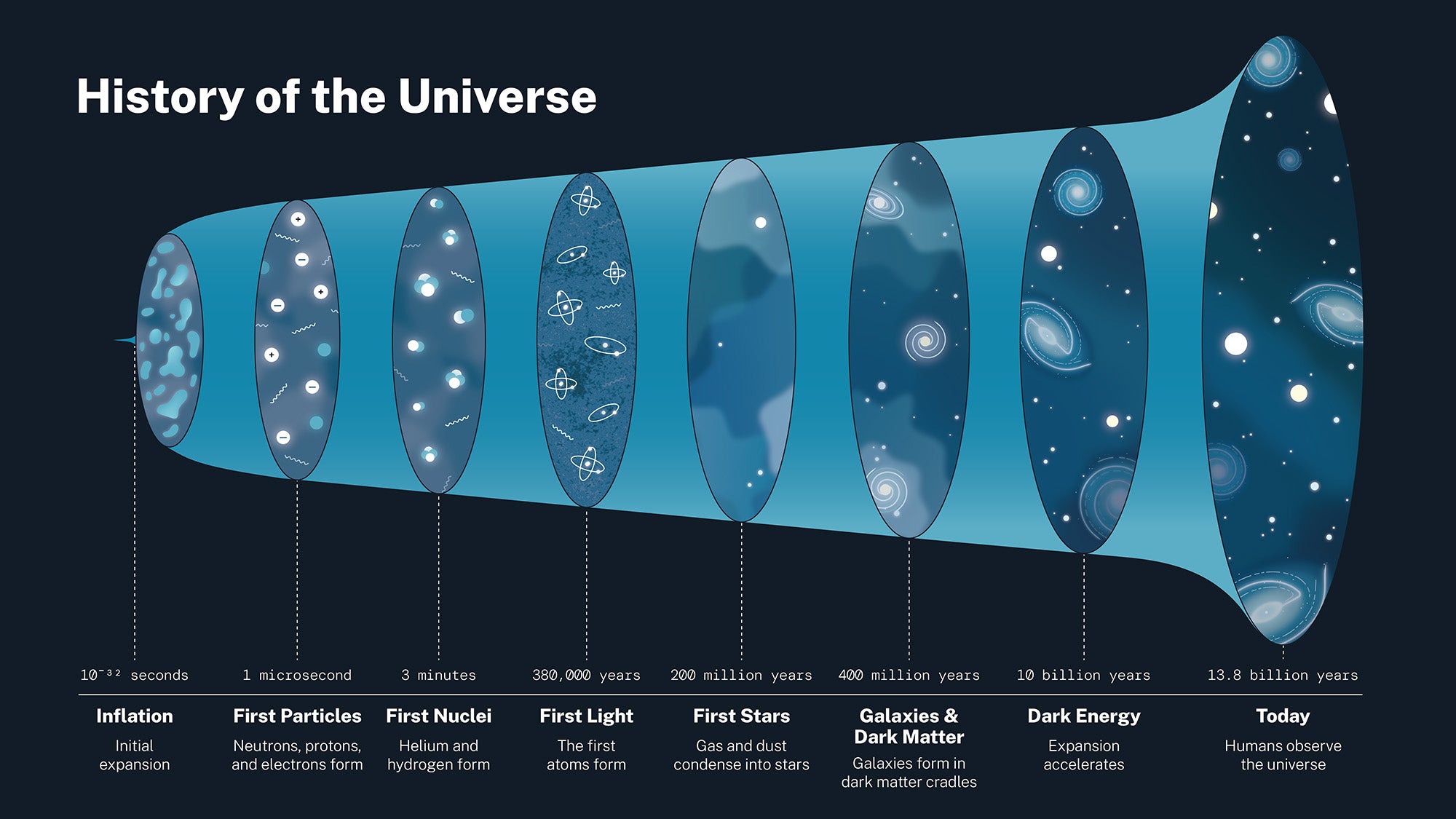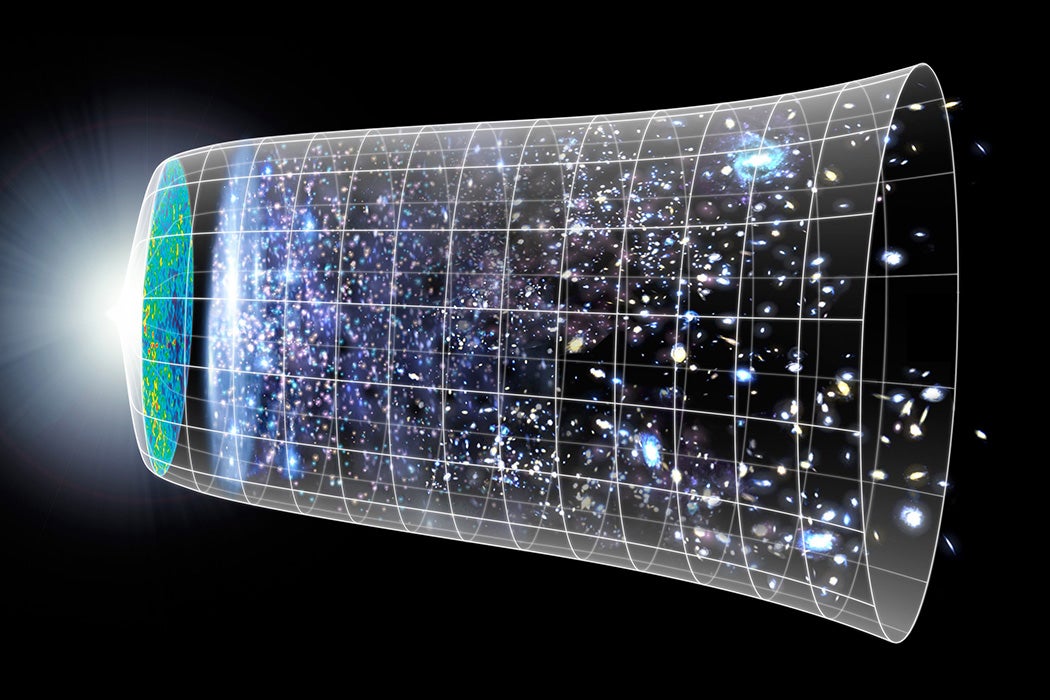Two cosmological mysteries continue to fascinate scientists and science enthusiasts alike. The first is understanding in detail how the Universe came into existence. The second is the nature of dark matter, a substance which is thought to be far more prevalent than all the stars and galaxies in the Universe. A recent paper explores a possible intricate connection between these two phenomena and proposes that the beginning of the Universe included not one, but two, Big Bangs.
To understand the implications of this interesting new idea, we must first consider the prevailing understanding of both the Big Bang and dark matter.
In the Beginning
According to the accepted theory of the beginning of the Universe, a tiny fraction of a second after the Universe began, there was a period called “inflation.” During inflation, the Universe expanded very quickly—faster than the speed of light. Inflation was driven by the existence of a form of energy called “vacuum energy.” Inflation persisted only for a very short time, lasting far less than a second, during which our visible Universe expanded from a size smaller than an atom to about the size of a football stadium.
As the inflation period ended, the energy driving the expansion changed form and created the matter that evolved into the Universe we see today. The moment that the Universe transitioned from being governed by inflation to being filled with a hot and dense plasma is the beginning of what scientists call the Big Bang.
The other interesting phenomenon is dark matter, a proposed substance that, if it exists, explains some observed astronomical anomalies. Galaxies, like people, are made of ordinary matter, and we can use the laws of physics to predict how they should move. However, when astronomers study the heavens, they see some surprises. One example is that galaxies rotate faster than expected. A second example is that certain galaxy clusters shouldn’t exist, as individual galaxies are moving so fast that they should escape the gravitational attraction of their neighbors.

While there are several possible explanations for these and other astronomical mysteries, most scientists believe that in addition to the visible matter of stars and galaxies, there exists another form of matter, called dark matter. If dark matter exists, it is five times more prevalent than ordinary matter, and this additional mass exerts additional gravity, which means that galaxies can rotate faster and move more quickly than expected. The only way researchers have inferred the existence of dark matter is by how it affects nearby ordinary matter through gravitational attraction. There is no evidence that dark matter interacts in any other way.
Two Big Bangs
In the prevailing theory of the origins of the Universe, both familiar matter and dark matter were created at the same time, less than a second after the Universe began. Effectively, it is thought that a series of steps converted the energy that governed inflation into matter and dark matter.
However, the new paper raises a different possibility. Given that ordinary matter and dark matter only interact via gravity, perhaps they didn’t appear at the same time in the early Universe. This paper suggests that while the energy of inflation eventually transitioned into ordinary matter, dark matter might have had a different origin. In the new theory, there was a second form of energy, similar to the vacuum energy that caused inflation, but this new energy was dark vacuum energy, which became the origin of dark matter.
If it is true that ordinary vacuum energy and dark vacuum energy are different, it is not necessary that they convert into particles at the same time. Indeed, the new theory suggests that instead of being created a split second after the Universe began, vacuum dark energy could have created dark matter particles as long as a month later. This is still a short time compared to the lifetime of the Universe, but a long time compared to the timescales involved in particle physics.
Testing the Idea
Can this new idea be tested? If dark matter and ordinary matter interact only via gravity, the dozens of dark matter experiments currently underway will fail. All of them depend on dark matter and ordinary matter experiencing some sort of interaction beyond gravity. Thus, if this new theory is right, that would be disappointing.
Weekly Newsletter
However, when the dark vacuum energy transitioned into dark matter particles, that change of energy would have shaken the structure of space and time, creating gravitational waves that would fill the Universe. Metaphorically at least, this would appear to be a “hum” in the structure of space.
Very precise experiments have already reported detecting a cosmic hum, but a bit of caution is warranted. There are several astronomical phenomena that can generate a similar hum. Thus, the recent detection is not a confirmation this new theory. That will take more data and far more sophisticated analysis. However, the fact that facilities exist that can detect the right kind of gravitational waves gives us hope that researchers will be able to confirm or disprove this idea within a few years.







